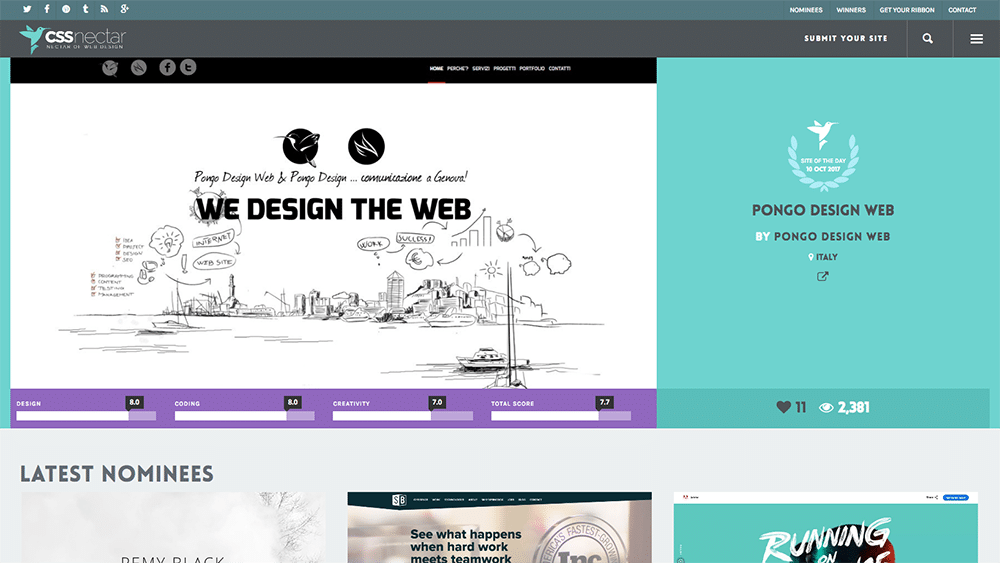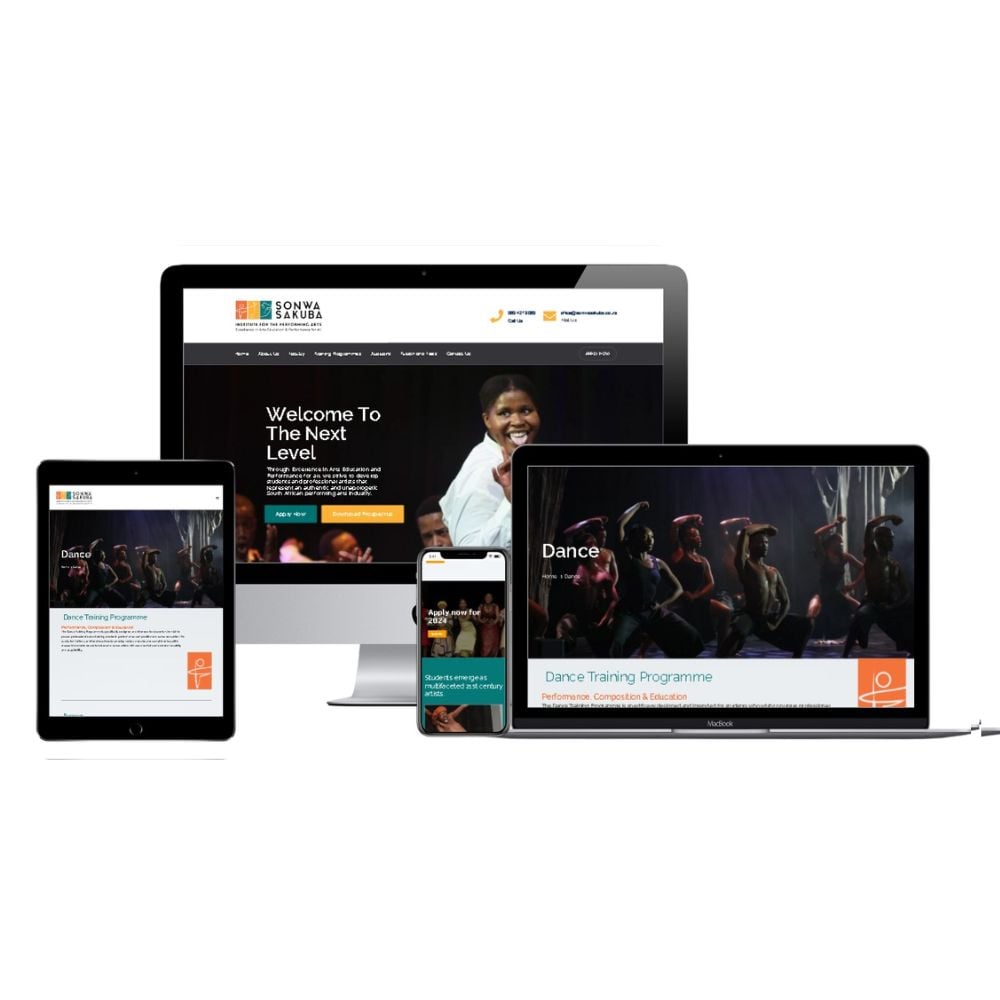Modern Web Site Style That Records Attention and Transforms
In a progressively digital landscape, modern website layout has become a crucial consider recording individual attention and driving conversions. By tactically using aesthetic pecking order, receptive designs, and engaging interactive elements, developers can create experiences that not just attract site visitors however additionally assist in meaningful communications. In addition, effective call-to-action approaches play a crucial function in directing customers toward preferred outcomes. As we check out these important parts, it ends up being clear that recognizing their interaction can significantly influence a web site's performance and individual fulfillment. What are the essential components that really make a difference?
Value of Visual Power Structure
Aesthetic pecking order is an essential component in internet site layout, as it overviews customers' attention and enhances their total experience. By purposefully arranging web content, developers can route individuals to the most essential info first, thereby raising interaction and boosting use. Efficient visual power structure uses numerous methods, including dimension, contrast, spacing, and color. Larger elements normally draw the eye, while contrasting shades can stress crucial messages, making them attract attention amongst more controlled parts.
Incorporating a sensible circulation in content setup is vital; for instance, putting one of the most crucial details on top of a web page promotes instant acknowledgment. Consistent usage of typography, such as varying font sizes and styles, assists develop a clear web content framework. This organization not only aids in navigating but likewise develops trust fund, as individuals really feel much more comfy when they can quickly discover what they are looking for.
Eventually, a well-executed visual pecking order not just improves visual charm however additionally dramatically affects individual habits. By prioritizing necessary elements and guaranteeing a seamless experience, designers can effectively transform site visitors right into clients, strengthening the relevance of this foundational layout concept in modern-day internet site advancement.
Responsive Style for All Tools
Producing a seamless experience throughout various devices is vital in today's digital landscape, where users accessibility internet sites from desktop computers, mobile phones, and tablet computers alike. Receptive layout is a crucial approach that ensures internet sites adjust fluidly to various screen resolutions, orientations, and dimensions. By employing adaptable grids, images, and CSS media queries, designers can produce formats that maintain aesthetic honesty and capability, despite the gadget being made use of.
The importance of responsive layout prolongs beyond aesthetics; it straight impacts individual engagement and conversion rates. A site that operates well on all devices motivates longer check outs and decreases bounce prices, as users are most likely to connect with material that is very easy to navigate. Search engines, specifically Google, prioritize mobile-friendly websites in their rankings, making responsive layout a crucial element of search engine optimization (SEO)
Including receptive style not just enhances individual experience yet likewise simplifies the growth process. By producing a single website that functions throughout tools, services can conserve time and sources contrasted to developing different mobile and desktop variations. Eventually, responsive design is a basic method for contemporary internet site style, ensuring ease of access and contentment for all customers, despite their tool.
Involving Interactive Components
While a receptive layout lays the foundation for a practical internet site, including interesting interactive components is critical for capturing user attention and fostering much deeper connections. Website Design. Interactive aspects, such as animations, quizzes, and clickable infographics, create a much more vibrant customer experience, motivating visitors to invest even more time on the website
Including interactive websites attributes can likewise direct customers via facility info, making it much easier to absorb content. As an example, interactive sliders can highlight product variations, while ingrained videos can give presentations or testimonies that reverberate more than static images or message. In addition, gamification methods, like rewards for finishing tasks or engaging with content, can improve individual motivation and retention.
Effective use of interactive aspects not just enhances the customer experience yet see post can additionally lead to higher conversion rates. It is important to balance interactivity with efficiency; overly complicated attributes may hinder website speed, negatively impacting individual contentment.
Streamlined Navigating Practices
Reliable navigating is a foundation of any successful website, as it directly affects individual experience and content accessibility. Streamlined navigating methods ensure that users can quickly find information, enhancing their interaction with the website. A well-structured navigating menu ought to be basic and user-friendly, normally including a restricted number of primary groups to prevent overwhelming site visitors.
To accomplish structured navigation, developers ought to prioritize a hierarchical framework that rationally organizes web content. Implementing breadcrumb routes can offer users with context concerning their present area within the site, permitting seamless backtracking. In addition, making use of drop-down food selections can effectively preserve area while still providing accessibility to subcategories.
Responsive style is crucial, as navigating should be useful across all devices (Website Design). Mobile customers, in particular, gain from touch-friendly menus and collapsible sections that maintain functionality without compromising appearances

Efficient Call-to-Action Methods
A well-crafted call-to-action (CTA) is necessary for directing individuals towards wanted end results on a website, as it motivates them to engage with web content or make an acquisition. To optimize their performance, CTAs should be clear, compelling, and tactically put throughout the site.
First, make use of action-oriented language that connects seriousness or worth, such as "Begin," "Sign up with Now," or "Claim Your Price cut." This language not only inspires users but also sets clear assumptions about the next steps.
2nd, consider design aspects; CTAs must stand out aesthetically with contrasting shades, enough whitespace, and noticeable positioning. A button that is very easy to see and click boosts the possibility of individual communication.
Furthermore, customizing CTAs based upon individual behavior or demographics can dramatically enhance involvement. Customized messages resonate more with customers, driving greater conversion rates.

Conclusion
Finally, modern-day internet site design highlights the combination of visual pecking order, responsive designs, involving interactive elements, streamlined navigation, and reliable call-to-action strategies. These parts jointly enhance individual experience, ensuring that site visitors remain involved and inspired to discover content even more. By focusing on these design principles, businesses can dramatically enhance customer retention and conversion prices, ultimately leading to greater success in the electronic landscape. The continuous advancement of web layout underscores its important duty in efficient online communication and advertising.
In an increasingly electronic landscape, modern internet site design has arised as an essential aspect in capturing individual interest and driving conversions.Aesthetic power structure is an essential component in site layout, as it overviews individuals' interest and improves their general experience.The significance of responsive style extends beyond looks; it directly impacts user involvement and conversion rates.Incorporating responsive design not only improves individual experience but additionally streamlines the development procedure. Inevitably, responsive style is an essential technique for contemporary internet site style, ensuring access and fulfillment for all individuals, no matter of their gadget.